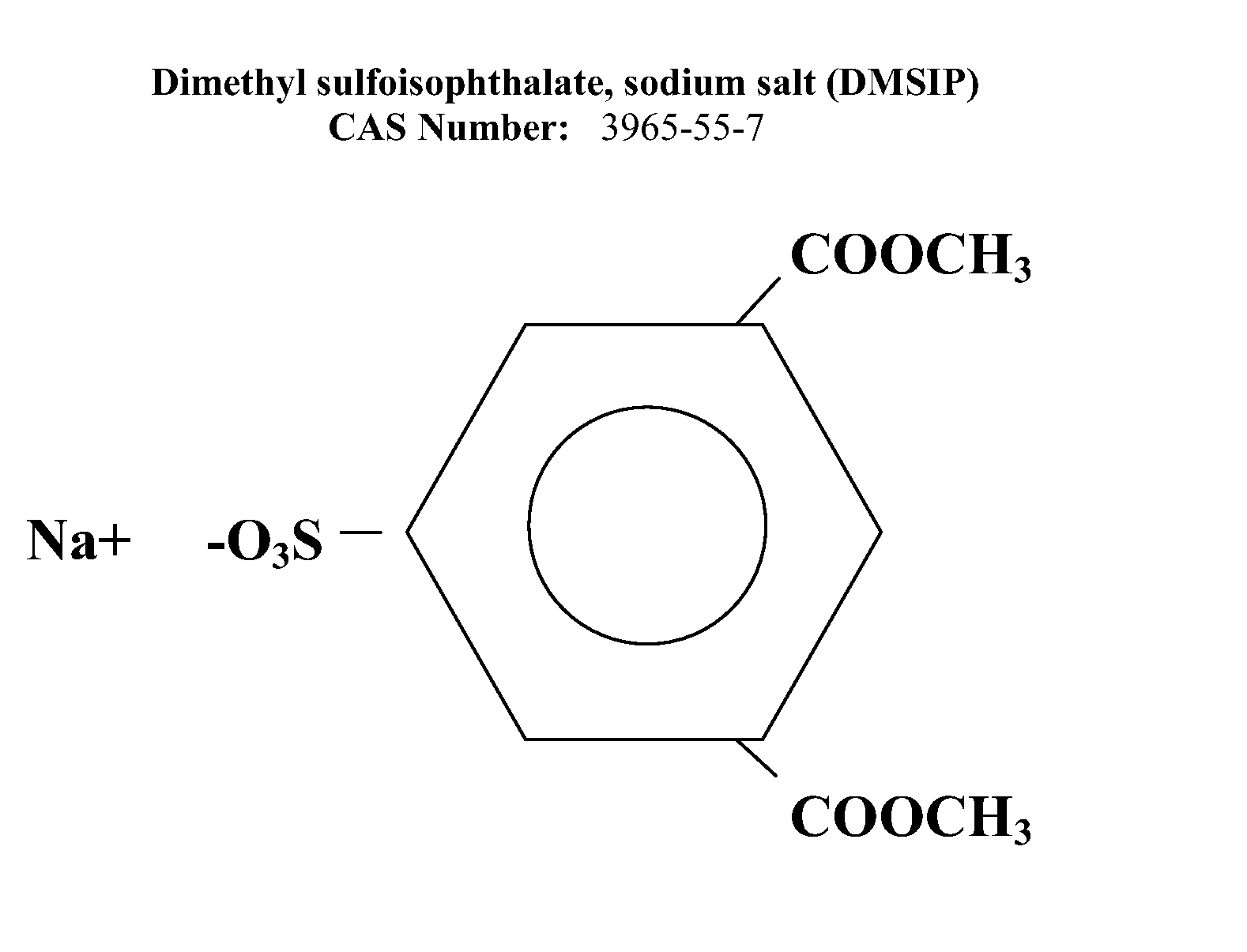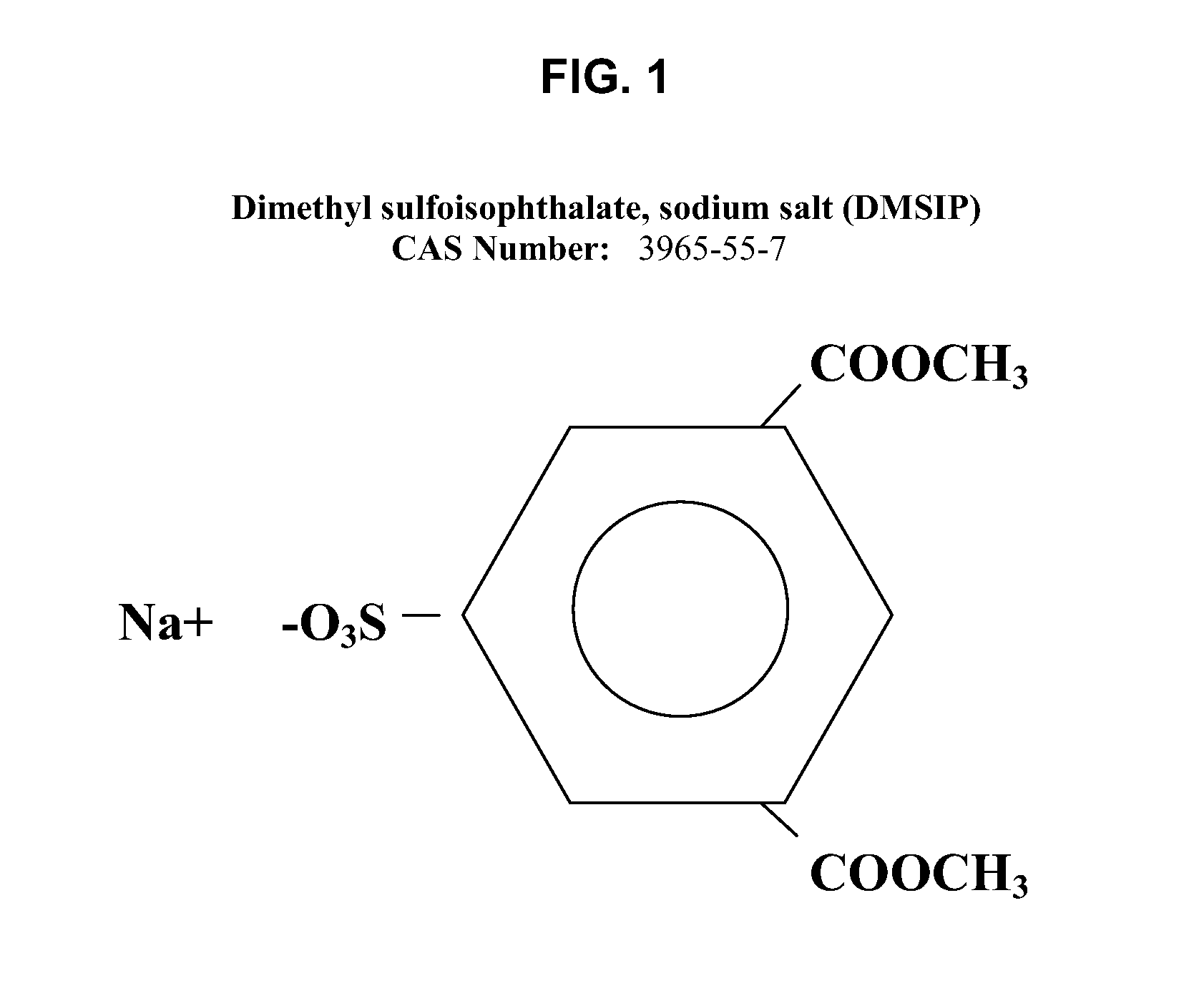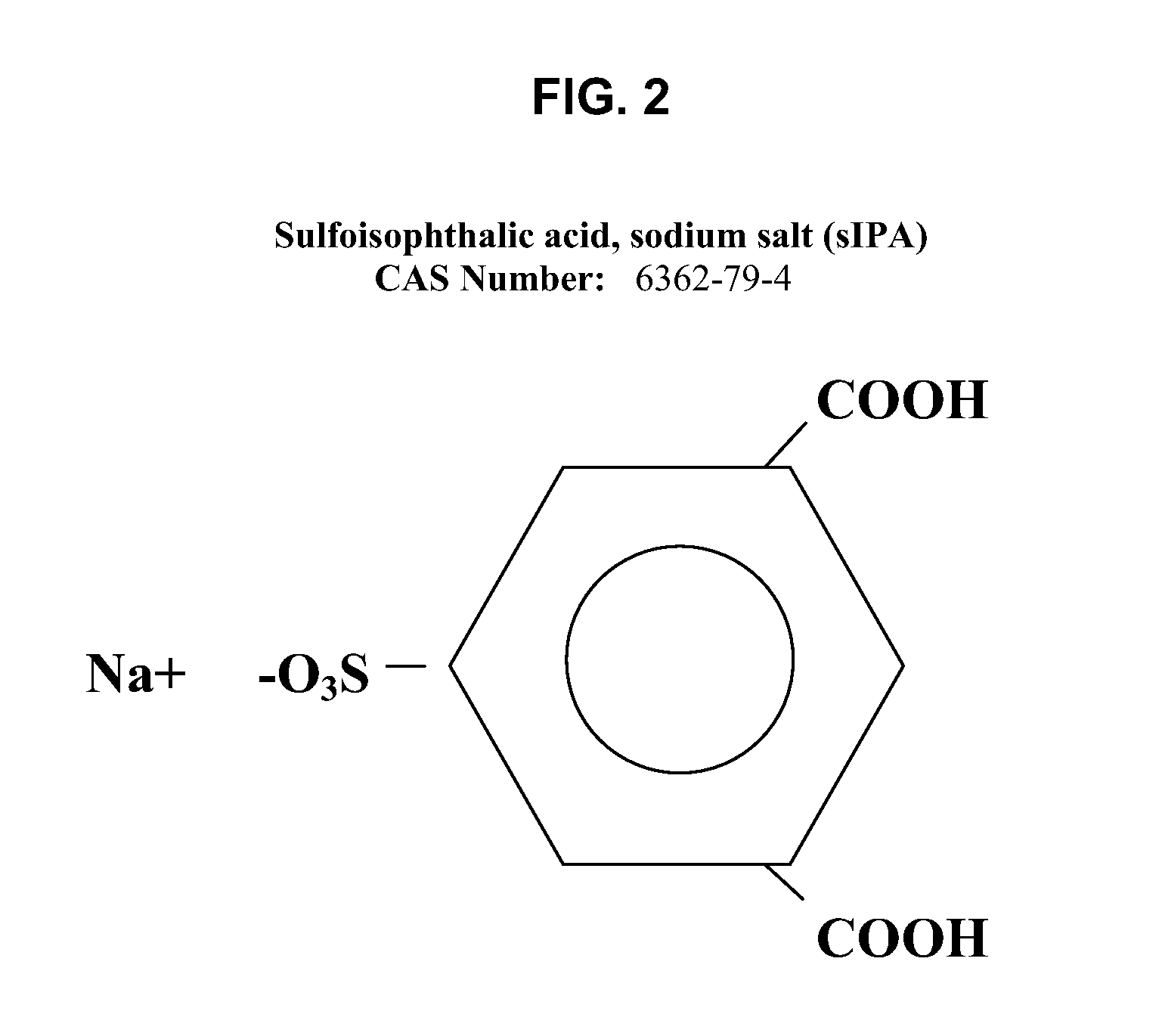Polyamide-Polyester Polymer Blends and Methods of Making the Same
a polymer blend and polymer technology, applied in the field of polyamidecompatible polyethylene terephthalate resins, can solve the problems of poor affinity between polyamides and polyesters, inadequate shelf life of polyamide packaging, and corollary problems, and achieve the effect of facilitating the recycling of polyester bottles and cost-effectiveness
- Summary
- Abstract
- Description
- Claims
- Application Information
AI Technical Summary
Benefits of technology
Problems solved by technology
Method used
Image
Examples
examples
[0155] Polyamide-compatible polyethylene terephthalate polymers (“polymer”) were prepared using a slurry of terephthalic acid, isophthalic acid, ethylene glycol (to facilitate polymerization, a nominal 15 percent molar excess of ethylene glycol is used), antimony trioxide, and cobalt acetate. This is the batch charge (“BC”). The slurry was esterified for approximately two hours at 260° C. and a pressure of 40 psi (280 kPa). Under these conditions, the acids esterify to approximately 90 percent completion and diethylene glycol begins to form. Next, the pressure is reduced to atmospheric. At this point, DMSIP may be added as an ethylene glycol slurry.
[0156] Esterification is continued at atmospheric pressure (i.e., atmospheric esterification, or “AE”) for approximately one hour at 265° C., followed by the addition of a phosphoric acid / ethylene glycol solution as a stabilizer. The reaction temperature is increased to 285° to 290° C. and the pressure is gradually reduced to about 1 tor...
PUM
| Property | Measurement | Unit |
|---|---|---|
| weight percent | aaaaa | aaaaa |
| weight percent | aaaaa | aaaaa |
| weight percent | aaaaa | aaaaa |
Abstract
Description
Claims
Application Information
 Login to View More
Login to View More - R&D
- Intellectual Property
- Life Sciences
- Materials
- Tech Scout
- Unparalleled Data Quality
- Higher Quality Content
- 60% Fewer Hallucinations
Browse by: Latest US Patents, China's latest patents, Technical Efficacy Thesaurus, Application Domain, Technology Topic, Popular Technical Reports.
© 2025 PatSnap. All rights reserved.Legal|Privacy policy|Modern Slavery Act Transparency Statement|Sitemap|About US| Contact US: help@patsnap.com



